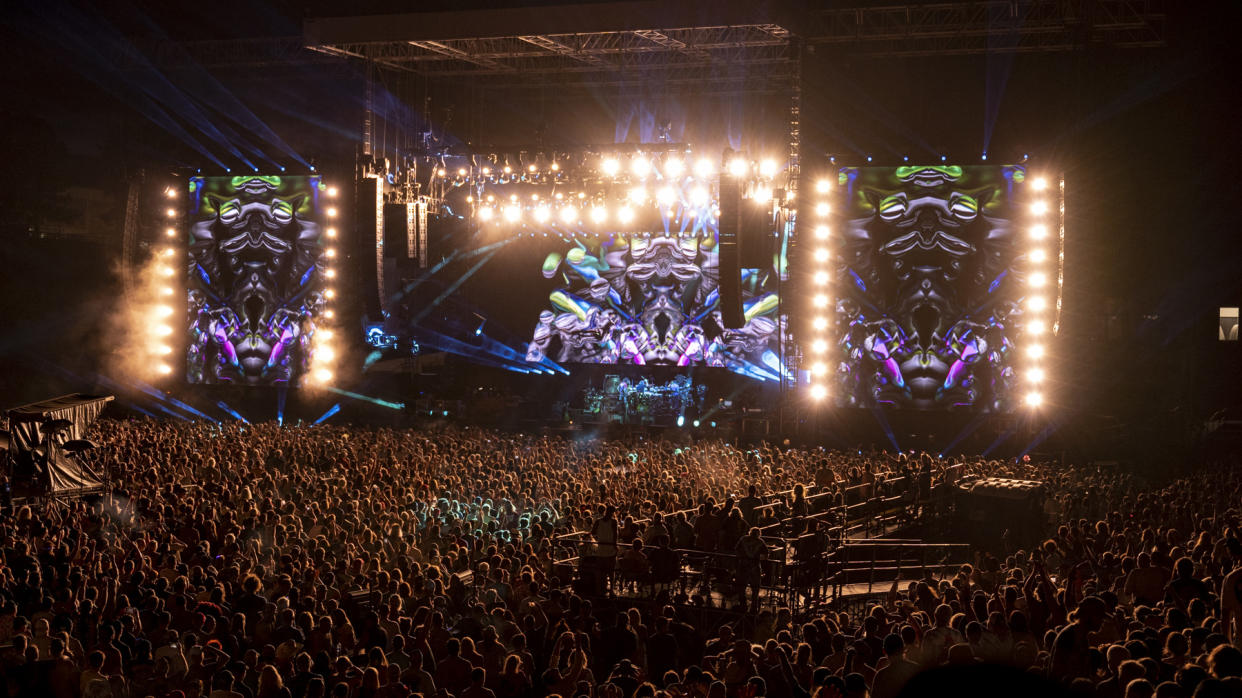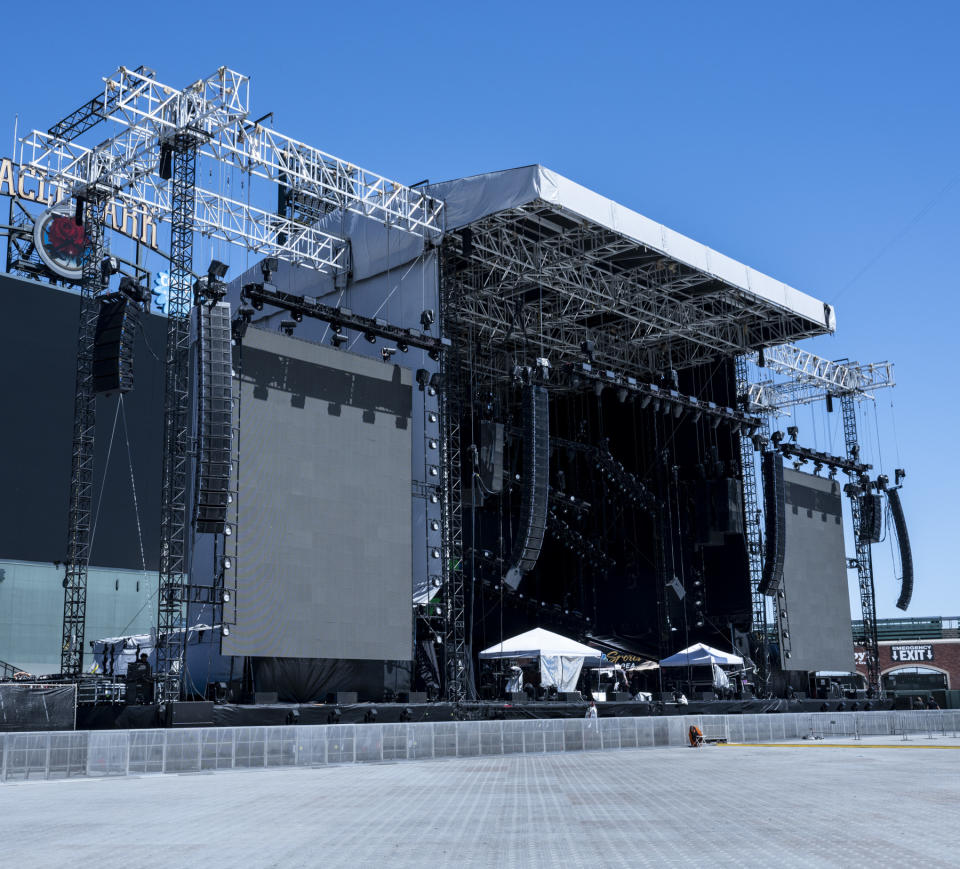The Grateful Dead’s Enduring Legacy Intertwines with Meyer Sound Systems

Among the top-grossing acts since its first tour in 2015, with this year’s outing Dead & Company Final Tour shattered all of their previous totals. Across 28 shows in 19 cities, according to Billboard Box Score, Dead & Company grossed $114.7 million and sold 845,000 tickets. As has been the case since the outset, Dead & Company was again accompanied by a Meyer Sound reinforcement system provided by UltraSound, and for the second year, the core of the system was powered by Meyer Sound PANTHER large-format linear line array loudspeakers.
However, the magnitude of this final leg of “the long, strange trip” must be measured by more than hard numbers. It marked the coda of a resilient cultural and sociological phenomenon—launched by the Grateful Dead—that has spanned nearly six decades and three generations.
As with last year’s tour, the PANTHER-based system adapted to a mix of large venues, in this case, one indoor arena, one college football stadium, nine MLB baseball stadiums, and 14 large outdoor pavilions. Each venue type required significant adaptations of the base system, but fortunately, the relatively light weight and compact size of the PANTHER loudspeakers made the changes quicker and easier.
[The Nine 2023: Katie Murphy Khulusi, the Driving Force Behind Meyer Sound's PANTHER]
“The change from LEO family boxes to PANTHER came in particularly handy for the delay towers,” said Derek Featherstone, tour director/FOH mixer for Dead & Company from the beginning and also CEO of UltraSound. “The audio delay towers are limited in total weight capacity, but with PANTHER we were able to hang more cabinets out there for better coverage in the back rows of stadiums.”
The main system for stadium shows comprised four main PANTHER arrays—two front and two side—each with 14 PANTHER-L long-throw loudspeakers and 4 PANTHER-W wide coverage loudspeakers.

“This year, we made a change and split the main and side hangs,” noted Featherstone. “In the past, we would keep them relatively close together, but this time we put them offstage of the video wall. This gave us a more consistent level across the floor. Also, we added a six-box LEO array offstage of the side hangs in order to get better coverage in the far extent of stadiums.”
Deep bass power was propelled by dual, flown end-fire arrays of 11—split 5 and 6—1100-LFC low-frequency control elements. On the ground were nine 700‑HP subwoofers and ten LYON-W loudspeakers for front fill. Delay towers for stadium shows were loaded with either PANTHER or LYON loudspeakers, drawn from UltraSound’s own inventory on the West Coast or cross-rented from DBS Audio for East Coast shows. The band’s foldback system included eight MJF‑210 stage monitor loudspeakers plus two each MJF-212 monitors, 1100‑LFC elements, JM-1P, and UPJ-1P loudspeakers.
The stellar audio quality of Dead & Company concerts has helped build the band’s following, and the fan base was exultant for the final tour. Postings on the Relix website include effusive comments like “best sound of any show I’ve ever been to,” “noticeably fantastic sound” and “the sound was perfect at all spots in the stadium I went around to listen.”
[I Love It Loud: The Evolution of Loudspeakers]
Featherstone shares credit for audience satisfaction with the entire UltraSound crew: system engineer Michal Kacunel, monitor engineers Lonnie Quinn and Ian Dubois, monitor tech Reilly Williamson, PA techs Sean McAdam and Riley Gajewski, and delay tech Erik Swanson. The audio recording tech was Ross Harris.
As the one principally responsible for bringing music out to the audience, Featherstone inherits the mantle of audio/touring legends like Owsley “Bear” Stanley, Dan Healy, and John Cutler. “All of these people kept pushing to make the band sound better and better,” said Featherstone. “The band welcomed this, of course, and in my case, I really appreciate working with a client that genuinely values high-end audio and supports our advancements in that department.”
The Grateful Dead and subsequent iterations of the original band are connected to UltraSound and Meyer Sound in a symbiotic relationship unique in the industry. “Meyer Sound always has listened closely to the needs of the touring band, as well as the packaging and durability needs of UltraSound,” said Featherstone. “The equipment has to sound great yet also reliably withstand the rigors of the road. For years UltraSound has been in the middle of this product development relationship, and Meyer Sound always has been good about addressing any items that would benefit from improvement.”
[Welcome to the AV Renaissance]
Looking back on his years with Dead & Company, Featherstone has a sense of completion but not of finality. “It has been great to be part of it,” he said. “Certainly, I did not expect this level of success or the duration. It’s hard to speculate what comes next, but I know these guys love to play and are far from done performing as individuals. As for the group…who knows?”
Company founders John and Helen Meyer, who attended the final shows in San Francisco, celebrated their past relationships but also looked forward to new possibilities. “This final tour closes an important chapter in the story of the Dead in its many forms,” said executive vice president Helen Meyer. “But it’s not the end of the book. There’s still more to come, with the people and the music.”

